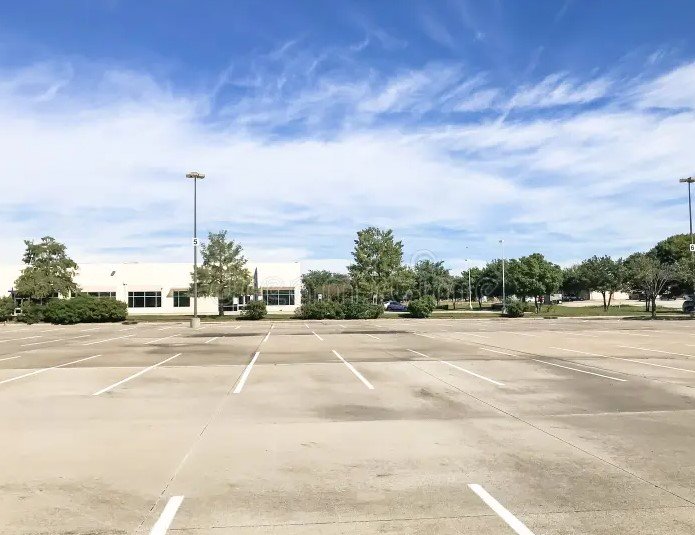A sprawling business park in Bridgend, Wales, designed to spark economic growth and create thousands of jobs, stands completely unused nearly four years after its completion. Despite a hefty £10 million investment from the Welsh government, the Brocastle site remains a ghost town of empty plots and unused roads, raising questions about public spending and regional development strategies.
Project Origins and High Hopes
The Brocastle Bridgend business park emerged as a key initiative to revitalize the local economy in an area hit hard by industrial decline. Construction wrapped up in November 2021 on land adjacent to the A48, just five miles from the M4 motorway’s junction 35. Officials aimed to transform the rural spot into a hub for businesses, with outline planning for up to 770,000 square feet of floor space.
Funding came primarily from the Welsh government, including £6.2 million from the European Regional Development Fund. An extra £2 million supported an active travel route linking the site to nearby Waterton, promoting sustainable access. At the time, leaders touted the project as a game-changer for employment in Bridgend, a town still reeling from the 2020 closure of the Ford engine plant, which axed over 1,700 jobs.
This investment aligned with broader Welsh efforts to attract industries like tech and manufacturing. Similar projects in other regions have succeeded, but Brocastle’s story highlights challenges in drawing tenants amid economic uncertainties, including post-Brexit trade shifts and rising energy costs.
Current State of the Site
Today, the park features nine fully prepared plots, complete with roads, pavements, and essential infrastructure, yet none host any businesses. Visitors encounter silent fields enclosed by fences, with no signs of activity like machinery or workers. Marketing agents continue to list all plots as available, underscoring the lack of progress.

Local observations paint a stark picture. Community members describe “roads to nowhere,” where pavements lead to empty land. This emptiness persists despite the site’s strategic location between major highways, which should appeal to logistics and distribution firms.
A recent site assessment revealed no visible development, fueling frustration among residents who expected an economic lift. Comparisons to other Welsh business parks show mixed results; for instance, some in Cardiff have filled quickly, while others in rural areas struggle similarly.
The delay comes at a time when Wales faces a 4.5% unemployment rate as of mid-2025, higher than the UK average of 4.2%, according to official statistics. This gap emphasizes the urgency for projects like Brocastle to deliver.
Government Response and Ongoing Efforts
Welsh government officials maintain optimism, stating that negotiations are underway for two plots. They describe the site as “actively marketed” and note several serious inquiries since completion. A spokesperson emphasized that the investment aims to provide long-term stimulus, with potential for thousands of jobs once occupied.
Critics, including opposition figures, argue the project exemplifies wasteful spending. Welsh Conservatives have pointed to it as part of a pattern, citing over £12 million total costs with zero jobs created so far. They call for better accountability in public funding.
To address concerns, the government has ramped up promotion through business networks and incentives like tax breaks for new tenants. These steps mirror responses to other stalled developments, such as the scrapped car factory plans in Bridgend that involved a £13 million grant in 2020, which ultimately went unused.
Local Impact and Community Voices
The empty park affects Bridgend’s community deeply, where job scarcity remains a pressing issue. Residents like community councillor Keith Hughes express hope that the investment will eventually bear fruit, but many feel let down by the slow pace. The area, on the border with the Vale of Glamorgan, needs an economic boost to counter declining high streets and youth emigration.
Local businesses report indirect effects, such as missed opportunities for supply chains. One shop owner noted that anticipated foot traffic from park workers never materialized, hurting nearby commerce.
Key community concerns include:
- Job creation delays exacerbating local unemployment.
- Environmental impacts from unused infrastructure, like potential wildlife disruption.
- Calls for repurposing the site if tenants do not arrive soon.
These sentiments echo broader Welsh challenges, including recent controversies over a hydrogen plant approval and industrial fires that have disrupted other employment areas.
Broader economic data shows Bridgend’s median wage at £28,500 in 2025, below the national average, highlighting the need for initiatives like this to succeed.
Challenges and Broader Economic Context
Several factors contribute to Brocastle’s vacancy. High interest rates and global supply chain issues have made companies cautious about expansion. The site’s rural setting, while scenic, may deter firms seeking urban amenities.
Comparisons to successful parks elsewhere reveal lessons. For example, a Somerset gigafactory secured £4 billion in investment and 4,000 jobs in 2024, thanks to better transport links and government incentives. Wales could learn from this by addressing M4 bottlenecks that hinder access.
A table of similar UK projects illustrates the variance:
| Project Name | Location | Investment (£M) | Jobs Created | Status as of 2025 |
|---|---|---|---|---|
| Brocastle Business Park | Bridgend, Wales | 10 | 0 | Empty |
| White Cliffs Business Park | Dover, England | 18.3 | 0 | Scrapped |
| Somerset Gigafactory | Somerset, England | 4,000 | 4,000 (projected) | Under construction |
| Cardiff Business Hub | Cardiff, Wales | 15 | 1,200 | Partially occupied |
This data underscores the risks of such investments without robust tenant attraction strategies.
Future Prospects and Potential Solutions
Looking ahead, experts suggest diversifying the park’s appeal, perhaps targeting green energy firms amid Wales’ push for net-zero goals by 2050. With ongoing talks, occupancy could begin by late 2025, potentially creating up to 2,000 jobs based on initial projections.
Logical steps include enhanced marketing, partnerships with tech giants like Microsoft, which has shown interest in Welsh data centers, and infrastructure upgrades. If these fail, repurposing for community use, such as education centers, could salvage value.
The saga serves as a cautionary tale for government-funded projects, emphasizing the need for market research and agile planning.
What do you think about this use of public funds? Share your thoughts in the comments below and pass this article along to spark discussion on economic development in Wales.








